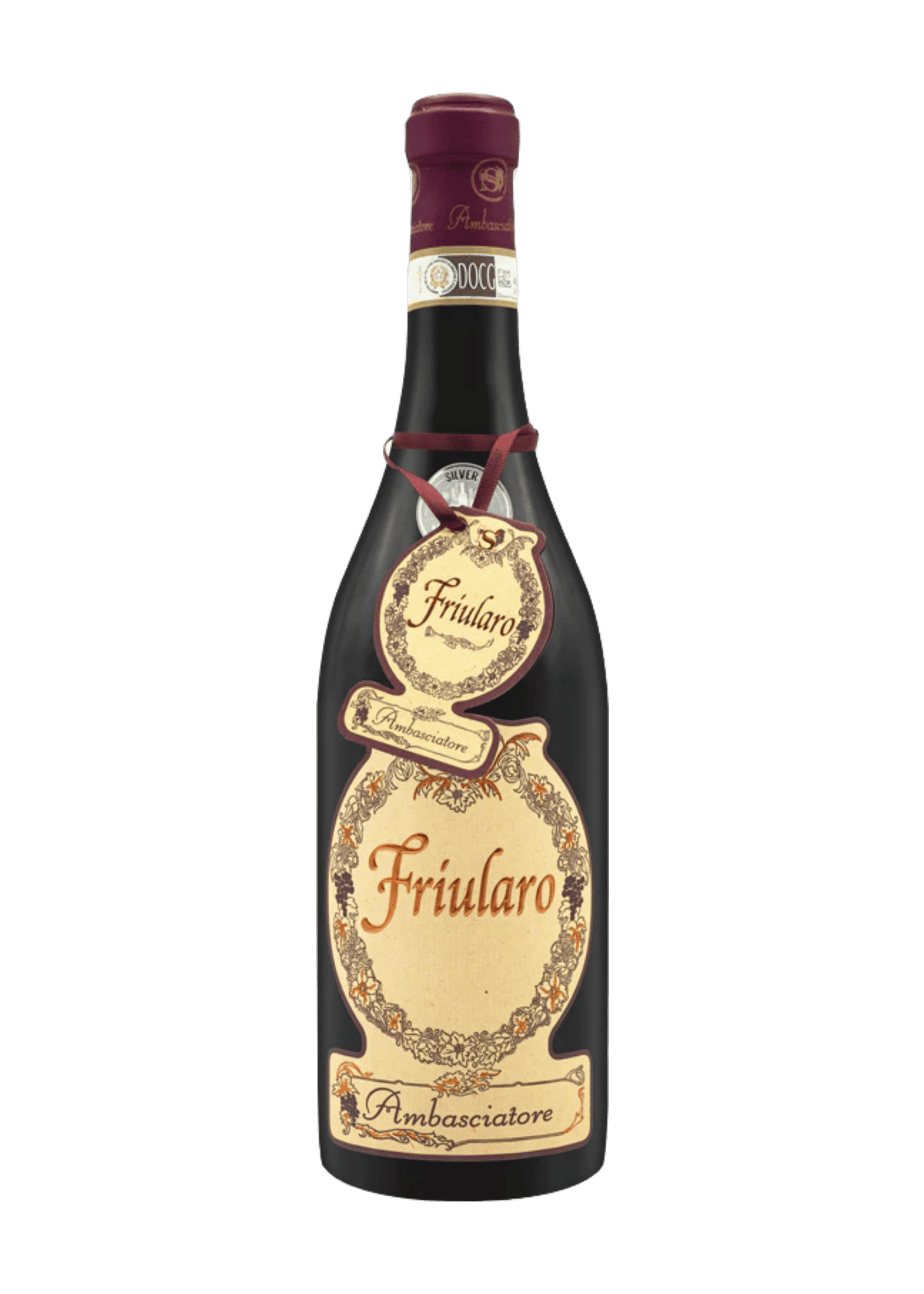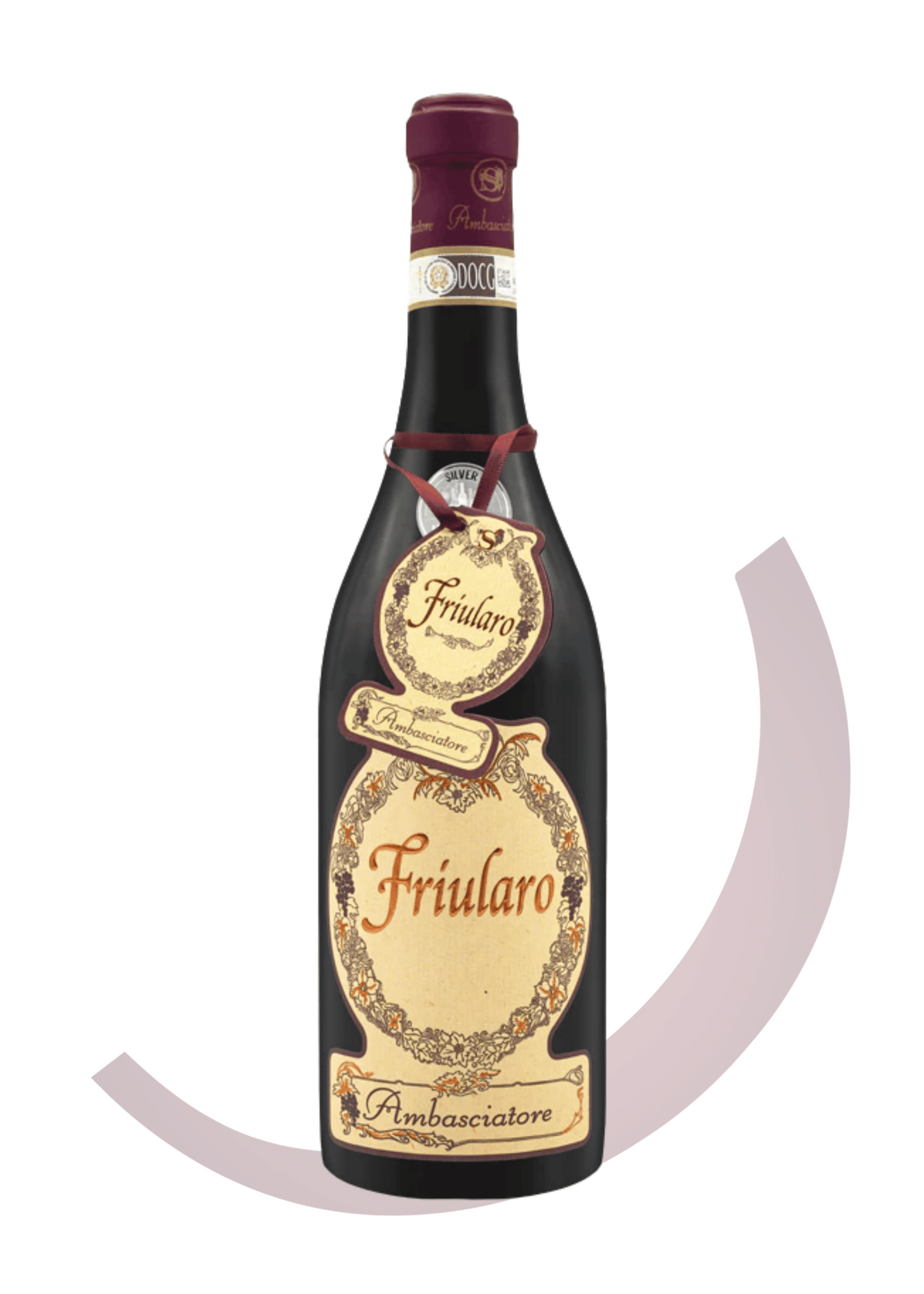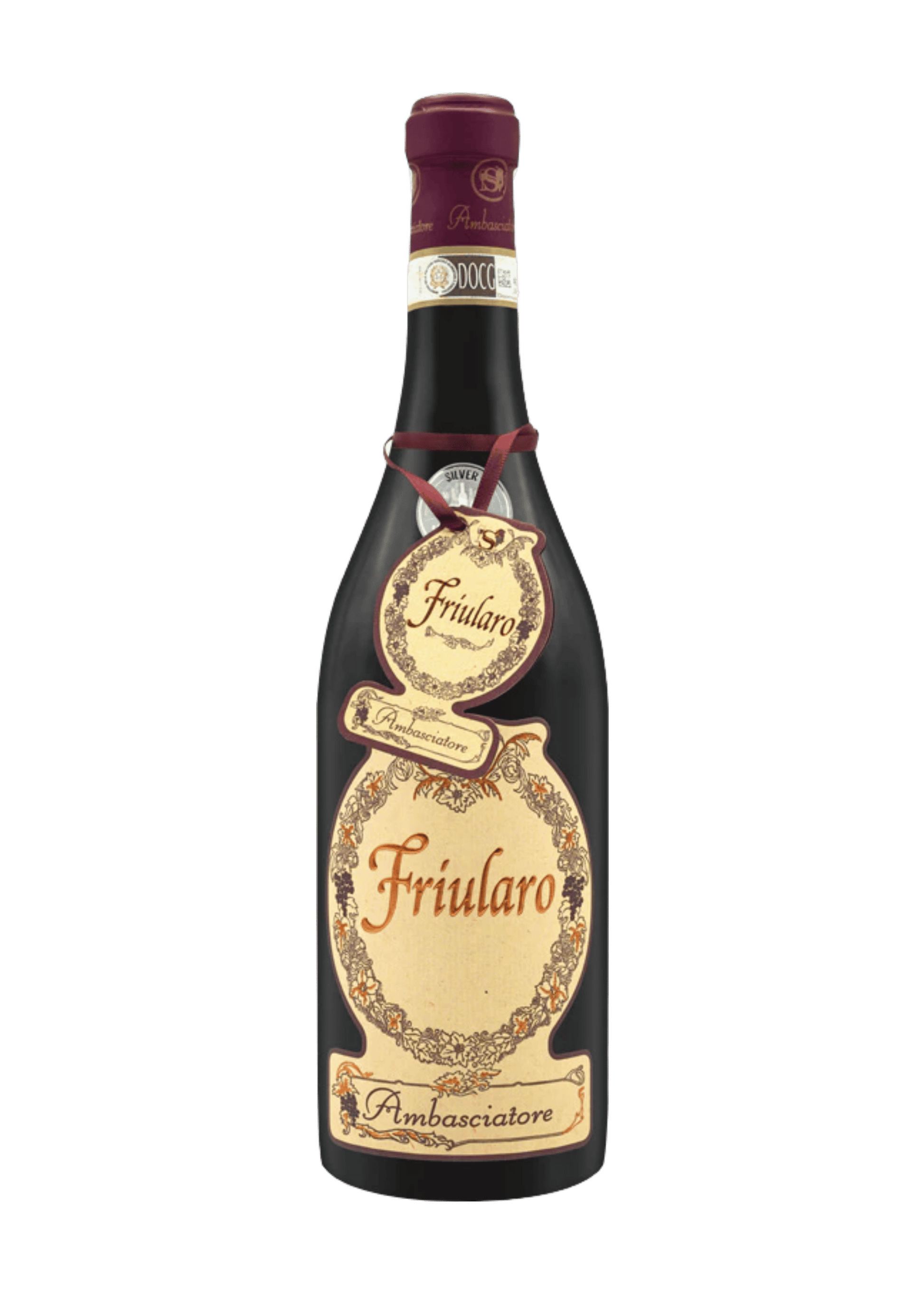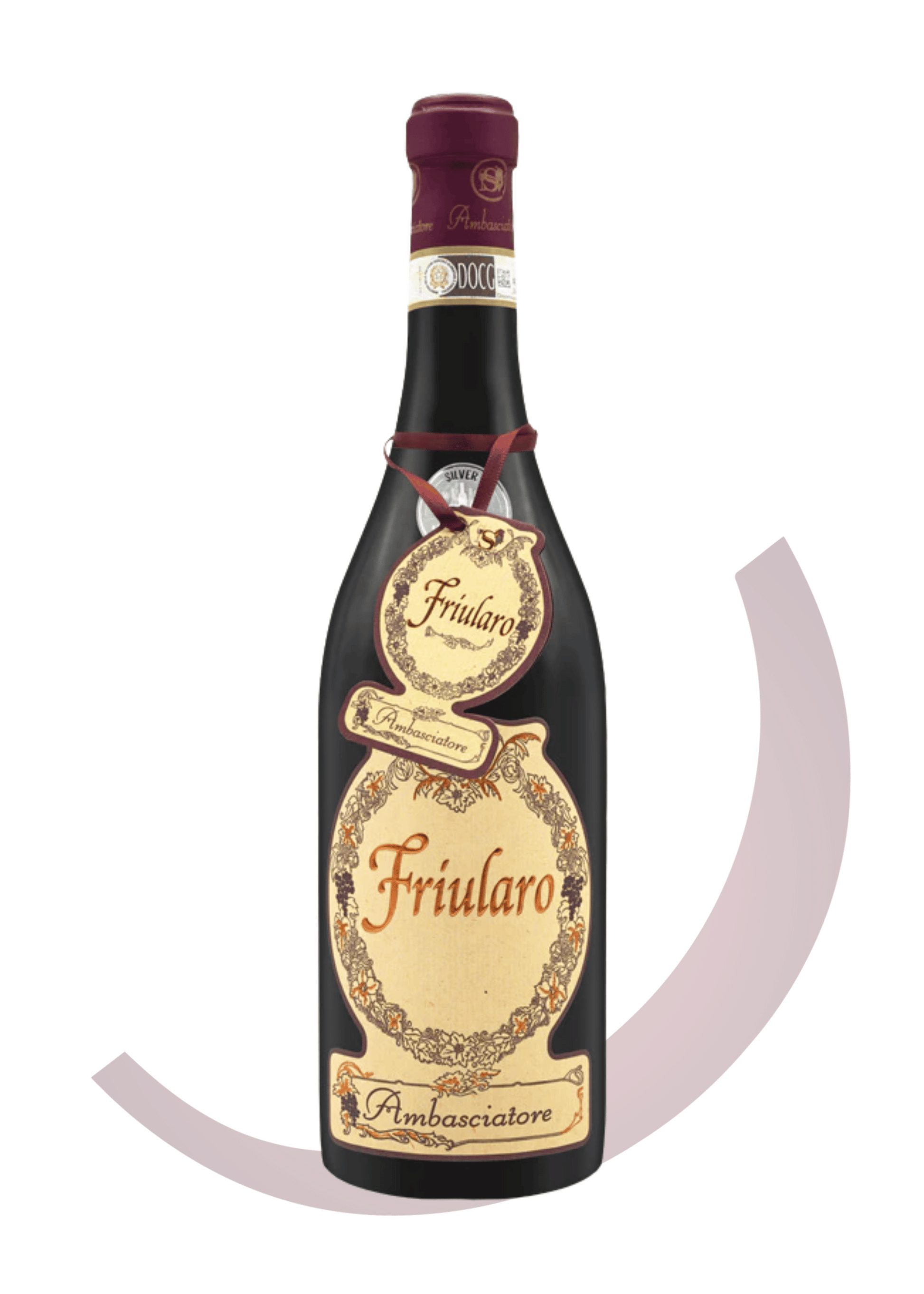Friularo Ambasciatore Raboso D.O.C.G. 2017
Friularo Ambasciatore Raboso D.O.C.G. 2017
Discover the Friularo Ambasciatore Raboso D.O.C.G. 2017, where vibrant red fruit meets playful hints of violet and cherry, finishing with a spicy wink. Its velvety texture and powerful structure bring fresh fruit and vanilla to the party, balanced by bold tannins. Perfect for pairing with game, braised meats, or aged cheese, this wine turns every meal into a joyful adventure. Cheers to flavor with a fun twist!
Couldn't load pickup availability
Sommelier's Notes
Tasting Notes
Tasting Notes
Bouquet
Red fruit character, hints of violet, cherry, and spicy finish
Flavor
Velvety, austere, powerful structure with fresh fruit, vanilla, pronounced tannins
Food Pairing
Game, braised meat, aged cheese
Tannins | 80%
Fruity | 75%
Floral | 40%
Spices | 90%
Minerals | 50%
Wine Profile
Wine Profile
Varietal
Raboso
Aging Style
Barrique
Color
Deep red with garnet hints
Body
Full-bodied
Sweetness
Dry
Serving Facts
Serving Facts
Cellaring
20 Years
Calories
69 cals (per glass, 3 oz)
Residual
Sugars
0 (gr/L)
Alcohol
Content
14.5% ABV
Decante
30 mins
Serving
Temperature
18-20 °C
Distinctions
Distinctions
Production Notes
Production Notes
Hand-harvested with double selection in both vineyard and winery. Grapes are dried in a fruttaio (drying room) throughout the winter, then vinified. The resulting wine is aged for 24 months in large oak barrels, followed by further aging in the bottle.



Veneto
Conselve
The goal of Conselve Vineyards is to produce wines that reflect the identity and uniqueness of their territory. For them, wine is not just a product, but a story of people, traditions, and innovation. They believe in sustainable development and continuously invest in improving their winery and reducing environmental impact, while ensuring the highest quality in their wines. Conselve embodies a centuries-old passion: as early as 100 AD, the Roman poet Martial praised the skill of its farmers and the richness of the countryside stretching from the foothills of the Euganean Hills to the boundary marked by the Via Annia, built in 131 BC.

